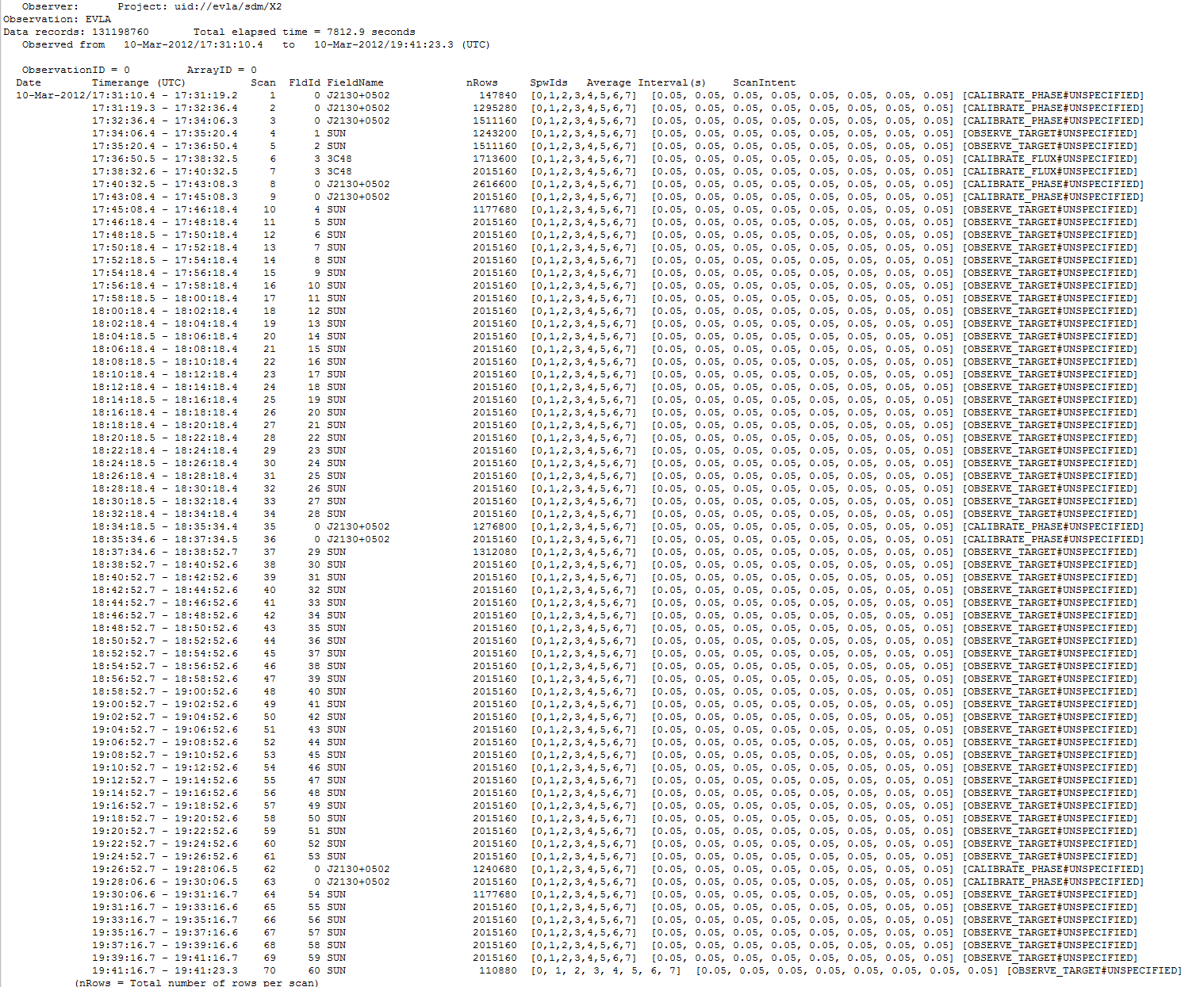VLA Data Survey: Difference between revisions
| Line 26: | Line 26: | ||
Use Goes as a example, | Use Goes as a example, | ||
[[Goes.png|Goes command window]] | |||
== Make the dynamic spectrum == | == Make the dynamic spectrum == | ||
Revision as of 09:29, 18 July 2017
This is a step-by-step tutorial for doing VLA solar data survey.
Preparatory Work
Get the visbility data
The first step of the data survey is to get the visbility data of the the event you are focusing on. Always the origrinal data should be in the the dictionary '/srg/data/evla', you can find the folders named by the date of the event.
The casa task 'listobs' can help to check the basic information of the data, to get the better understanding of each casa task, you can both type the task name followed with a question mark( for example, 'listobs?') in the server or directly google 'nrao casa listobs'.
For each casa task(take the listobs as a example), you can type 'tget listobs' and then 'inp' to get and change the input parameters. The link is the CASA guide
Task listobs can tell some basic information, use the 2012 Mar 10 event as a example,
The original data may be too large for us to do the survey directly, we can use the task 'split' to split the data.
Other information of the event
Except the vla data itself, we may also need the X-ray data and EUV data to help us. You can see the summary in Prof. Bin's website or go the flare browser and the helioviewer
If you are in the server, you can do into idl to get the plot of Goes and RHESSI, which can help us identify the features in the dynamic spectrum.
Type 'goes' or 'hessi' you will see the command window.
Use Goes as a example,
Make the dynamic spectrum
Select the appropriate baselines
Usually we use the task 'dspec' to make the dynamic spectrum, use get_dspec to create a npz file, the most important input is timerange and baseline. You can use the casa task 'viewer' to check the visbility data( remember when using the viewer, don not select too long timerange).
When coming into the window of viewer.
Better check both the longer baselines and shorter baselines.
Do the plot
Use plt_dspec to do the plot, after getting the npz file, you can do the plot. Usually we can do both LCP and RCP, also you can attach the goes figure. To get the survey of the whole timerange, we need to get a movie, select the movie as True, you can get a folder called 'dspec' which including the figures to make the movie.
